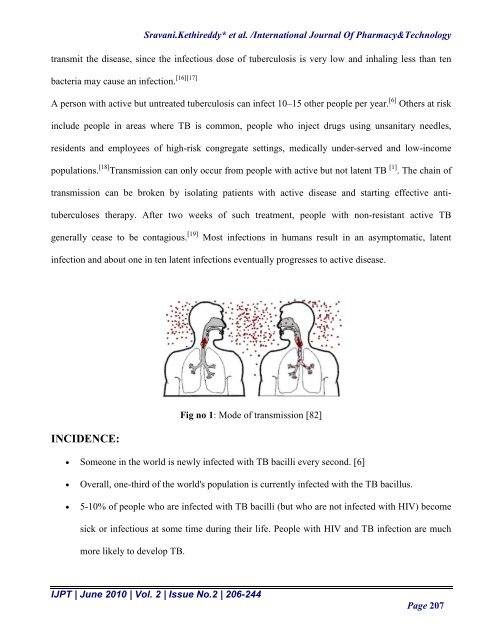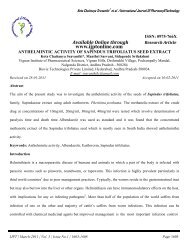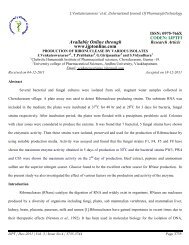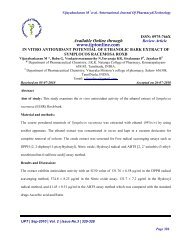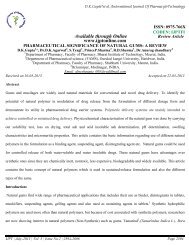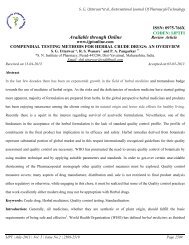Available Online through www.ijptonline.com
Available Online through www.ijptonline.com
Available Online through www.ijptonline.com
You also want an ePaper? Increase the reach of your titles
YUMPU automatically turns print PDFs into web optimized ePapers that Google loves.
Sravani.Kethireddy* et al. /International Journal Of Pharmacy&Technologytransmit the disease, since the infectious dose of tuberculosis is very low and inhaling less than tenbacteria may cause an infection. [16][17]A person with active but untreated tuberculosis can infect 10–15 other people per year. [6] Others at riskinclude people in areas where TB is <strong>com</strong>mon, people who inject drugs using unsanitary needles,residents and employees of high-risk congregate settings, medically under-served and low-in<strong>com</strong>epopulations. [18] Transmission can only occur from people with active but not latent TB [1] . The chain oftransmission can be broken by isolating patients with active disease and starting effective antituberculosestherapy. After two weeks of such treatment, people with non-resistant active TBgenerally cease to be contagious. [19] Most infections in humans result in an asymptomatic, latentinfection and about one in ten latent infections eventually progresses to active disease.INCIDENCE:Fig no 1: Mode of transmission [82]• Someone in the world is newly infected with TB bacilli every second. [6]• Overall, one-third of the world's population is currently infected with the TB bacillus.• 5-10% of people who are infected with TB bacilli (but who are not infected with HIV) be<strong>com</strong>esick or infectious at some time during their life. People with HIV and TB infection are muchmore likely to develop TB.IJPT | June 2010 | Vol. 2 | Issue No.2 | 206-244Page 207


